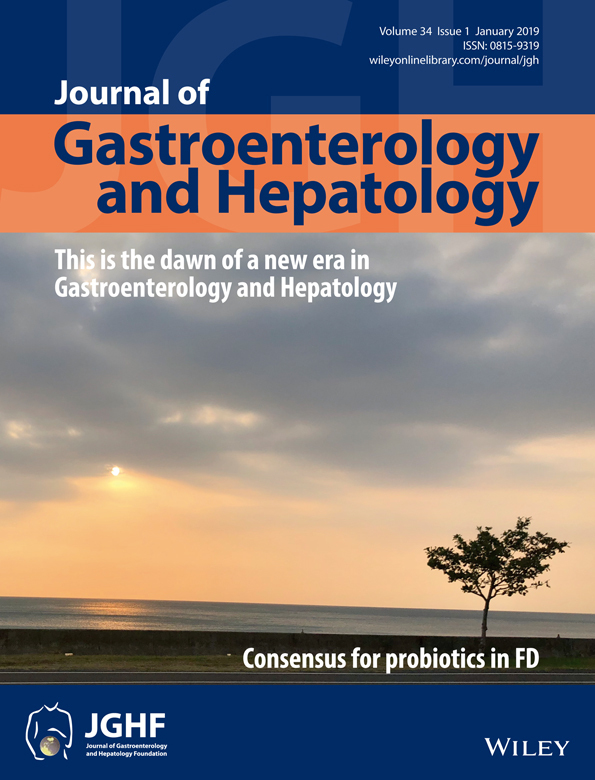Altered uric acid metabolism in isolated colonic Crohn's disease but not ulcerative colitis
Abstract
Background and Aim
Patients with inflammatory bowel disease (IBD) have higher incidence of developing nephrolithiasis. Increased uric acid production induced by Saccharomyces cerevisiae exacerbates colitis in mice. We aimed to evaluate the association between serum uric acid level and disease activity in IBD population.
Methods
Four hundred and thirty-five patients enrolled in Jinling Hospital from January 1, 2015 to August 31, 2017 were included in the retrospective study. Clinical parameters were collected and compared with non-IBD matched controls (n = 51). Serum uric acid to creatinine ratio (UA/Cr) was used as a biomarker for uric acid metabolism. Sixty-five active IBD patients were longitudinally studied to investigate the UA/Cr before and after therapy. Linear mixed models were estimated for Crohn's disease (CD) group to explore the relationship between UA/Cr and other parameters.
Results
Uric acid to creatinine ratio was significantly correlated with Crohn's disease activity index (ρ = 0.184, P = 0.002) and Harvey Bradshaw index (ρ = 0.154, P = 0.010) and C-reactive protein (ρ = 0.591, P < 0.001) in CD group. Colonic CD and anti-Saccharomyces cerevisiae antibody (ASCA) positive CD had an increased UA/Cr compared with L1, L3, and ASCA negative CD (P = 0.027, P = 0.0013, and P = 0.043, respectively). A significant decrease in UA/Cr was observed after induction therapy in active CD (P = 0.0002) but not in ulcerative colitis (P = 0.076).
Conclusion
Uric acid to creatinine ratio correlated with disease activity in CD. Colonic CD and ASCA positive CD had an increased UA/Cr. Effective treatment for CD patients lowered UA/Cr. Uric acid metabolism might be a novel aspect to investigate disease activity of IBD.




